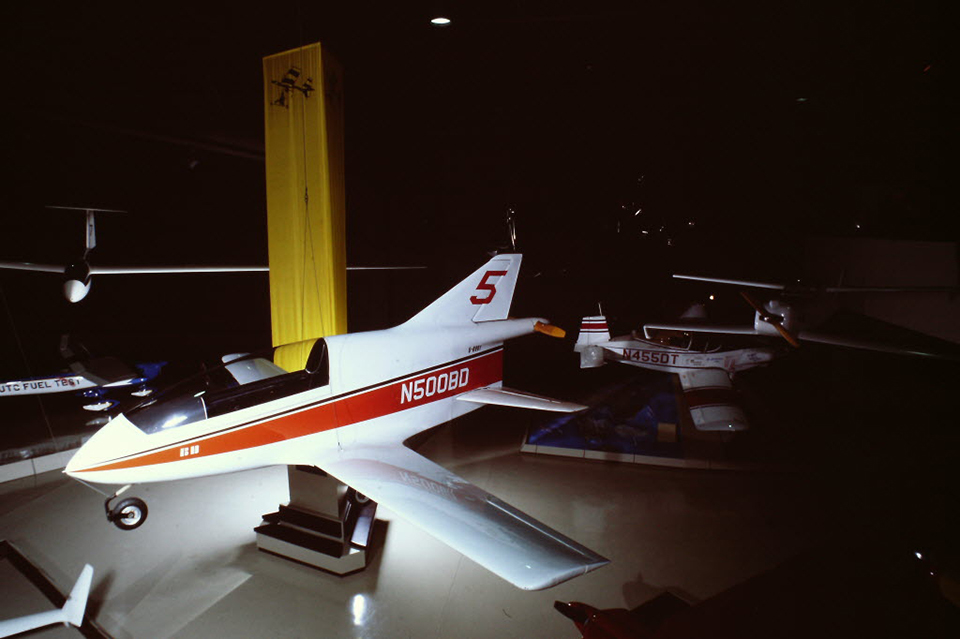Artifact Spotlight: Bede BD-5 – N500BD
By Benjamin Page, EAA Museum Collections Curator
December 29, 2020 – For decades, Oshkosh has been the place to show off the latest in sport aviation. Prototypes of Richard VanGrunsven's RVs, Frank Christensen's revolutionary Eagle, and Burt Rutan's unique composite canards have all made their public debut here, firing the imagination of pilots, homebuilders, and dreamers alike. Few of these Oshkosh debuts have had quite the same sort of impact as the BD-5, the first example of which survives in the collection as N500BD.
One could argue the BD-5 made several debut appearances. The aircraft's sleek, fighter jet-like looks and astonishing performance estimates first appeared as a series of slick brochures in 1970. Designer Jim Bede conceived what he referred to as the Micro in the late 1960s. Before then, Bede had made a name designing innovative, high-performance light aircraft such as the BD-4, a boxy, high-wing four-place aircraft which helped introduce pre-fabricated kits to the homebuilding scene. With the BD-5, Bede promised a compact, high-performance kit aircraft requiring only 600 man-hours to build at a basic price of $2,100 (about $13,000 today). Imaginations were enkindled and deposits poured in, even without a single aircraft yet built.
N500BD made its appearance at Oshkosh the next year. The aircraft looked very different than it does today, sporting a rakish V-tail and garish red paint scheme with checkerboard highlights. Like many prototypes, N500BD also differed from later BD-5s in other ways. Its landing gear was fixed and its fuselage was a fiberglass shell built over a bolted angle frame instead of the stamped aluminum semi-monocoque construction ultimately adopted. Though not yet flyable, N500BD's appearance inspired another wave of excitement — by the end of August 1971, deposits for more than 800 BD-5s had been received.
The first test flights of N500BD that September proved less than encouraging. The V-tail incurred significant stability issues. More ominously, the 36-hp snowmobile engine simply could not deliver the promised performance, foreshadowing one of the recurring issues that dogged the BD-5';s future. With improved second and third prototypes soon under construction, N500BD's flying days were cut short. The aircraft was repurposed as a test bed, first for a more conventional tailplane and then to test different powerplants. As the decade went on, a combination of factors — lack of a suitable engine, supplier problems, and several significant design and manufacturing challenges — gradually wore down the BD-5's luster. Ultimately, the aircraft fell far short of many of the promises that had been made.
The BD-5 and perhaps especially Jim Bede himself occupy an interesting, some might say contentious, part of aviation history. It would be unfair, however, to let that history cloud what thousands saw in the BD-5 all those years ago. Something about this aircraft spoke to people, to their imaginations. Consigned to static display, perhaps it is still doing just that today.

